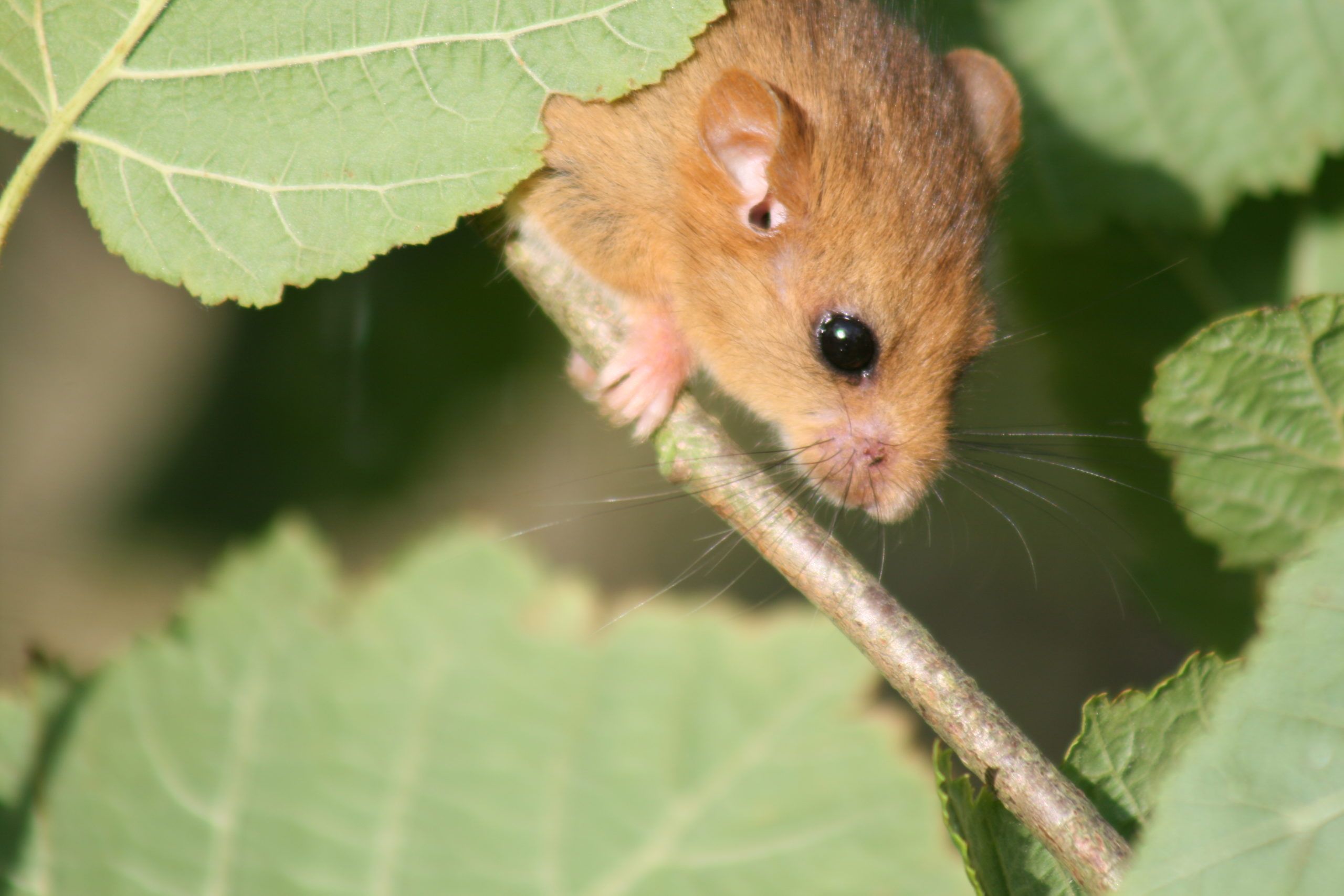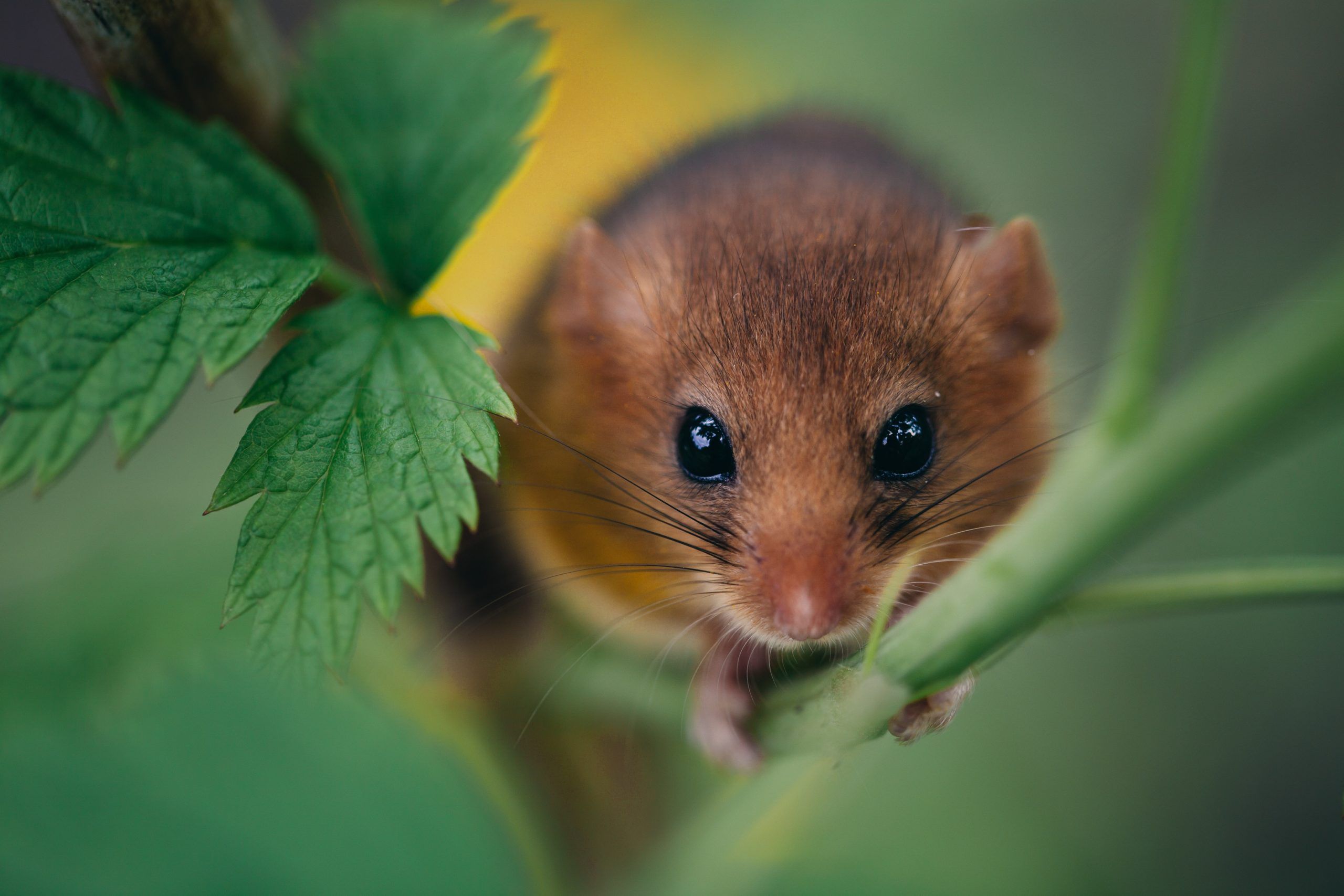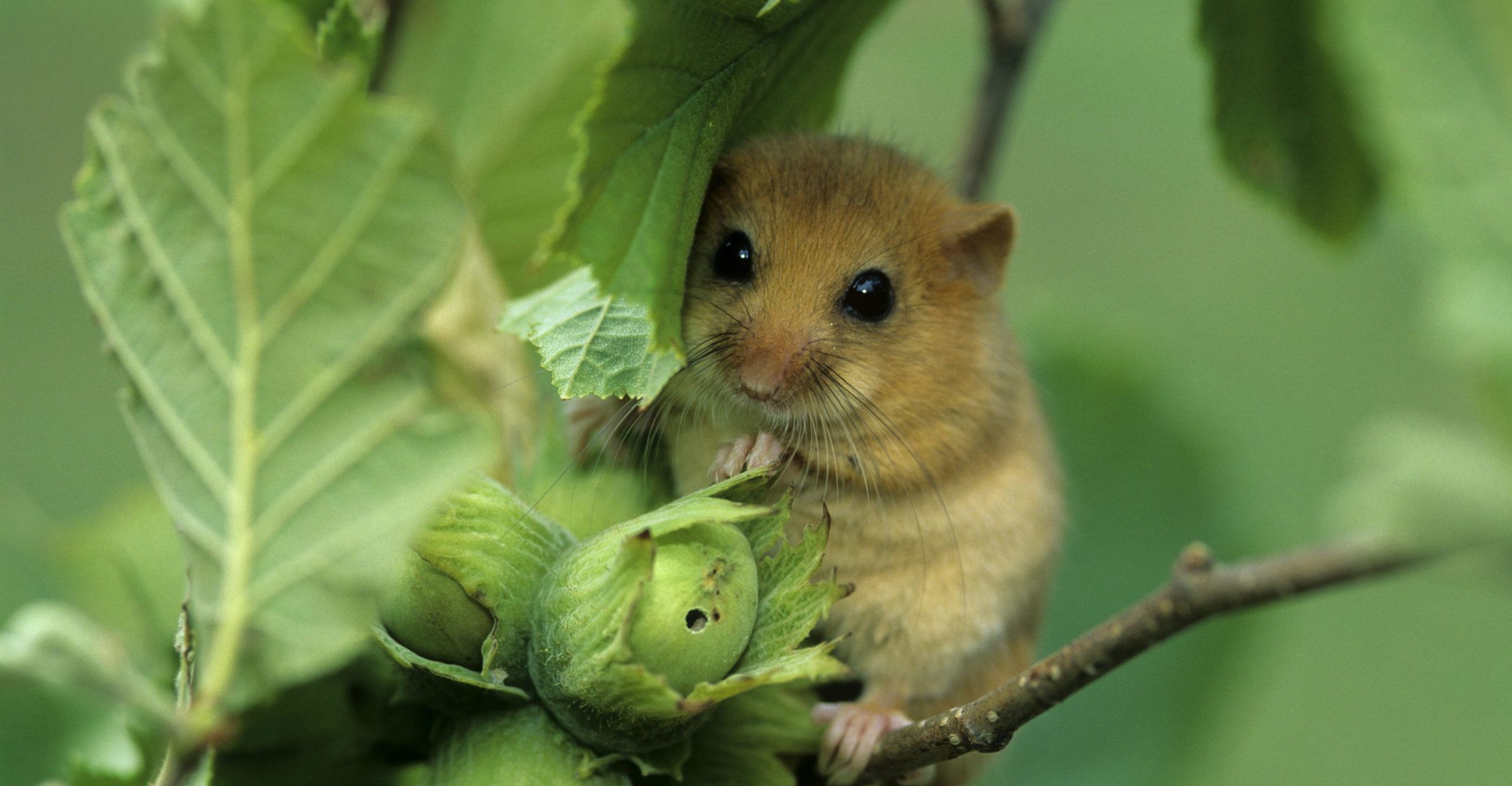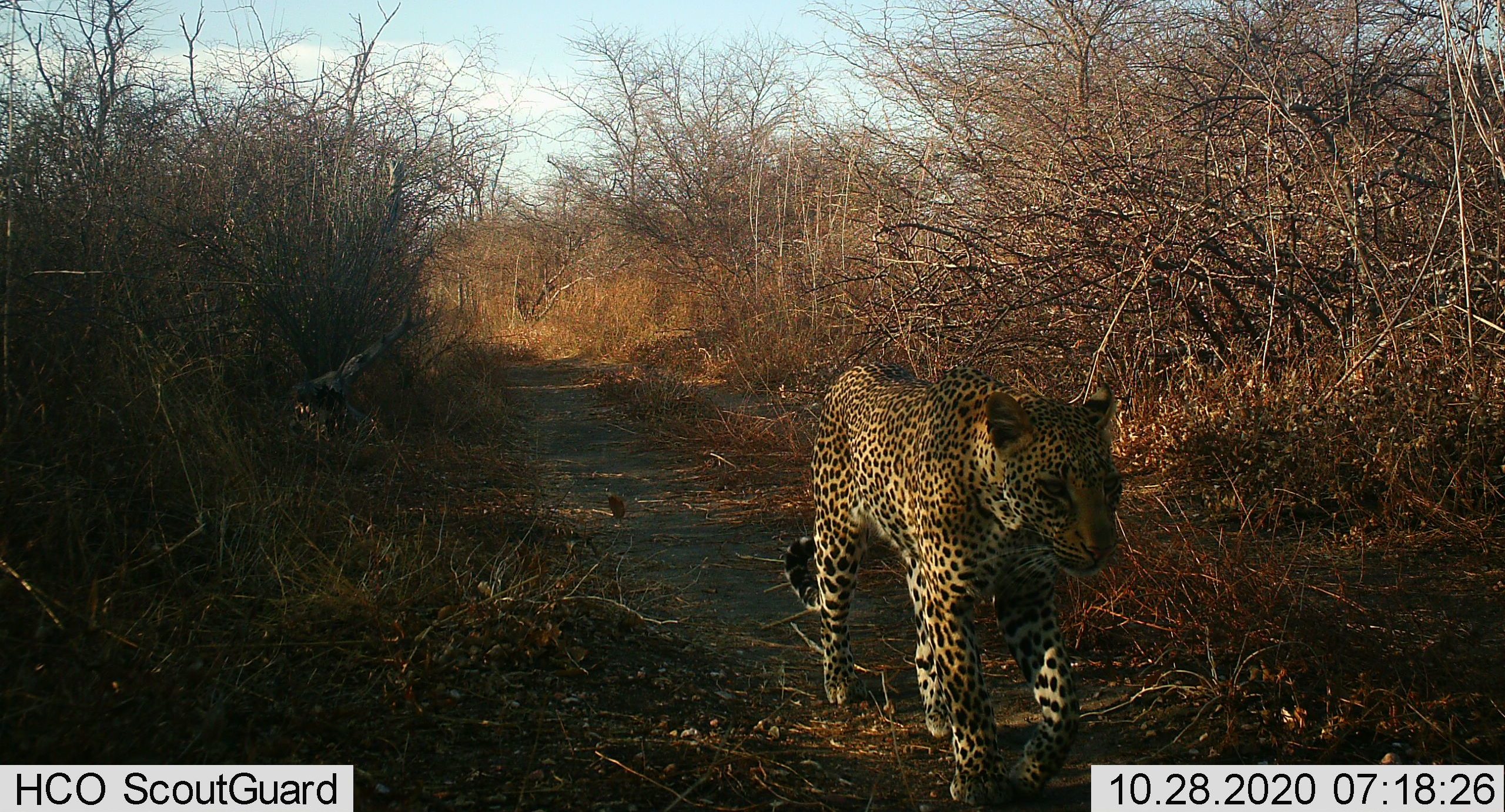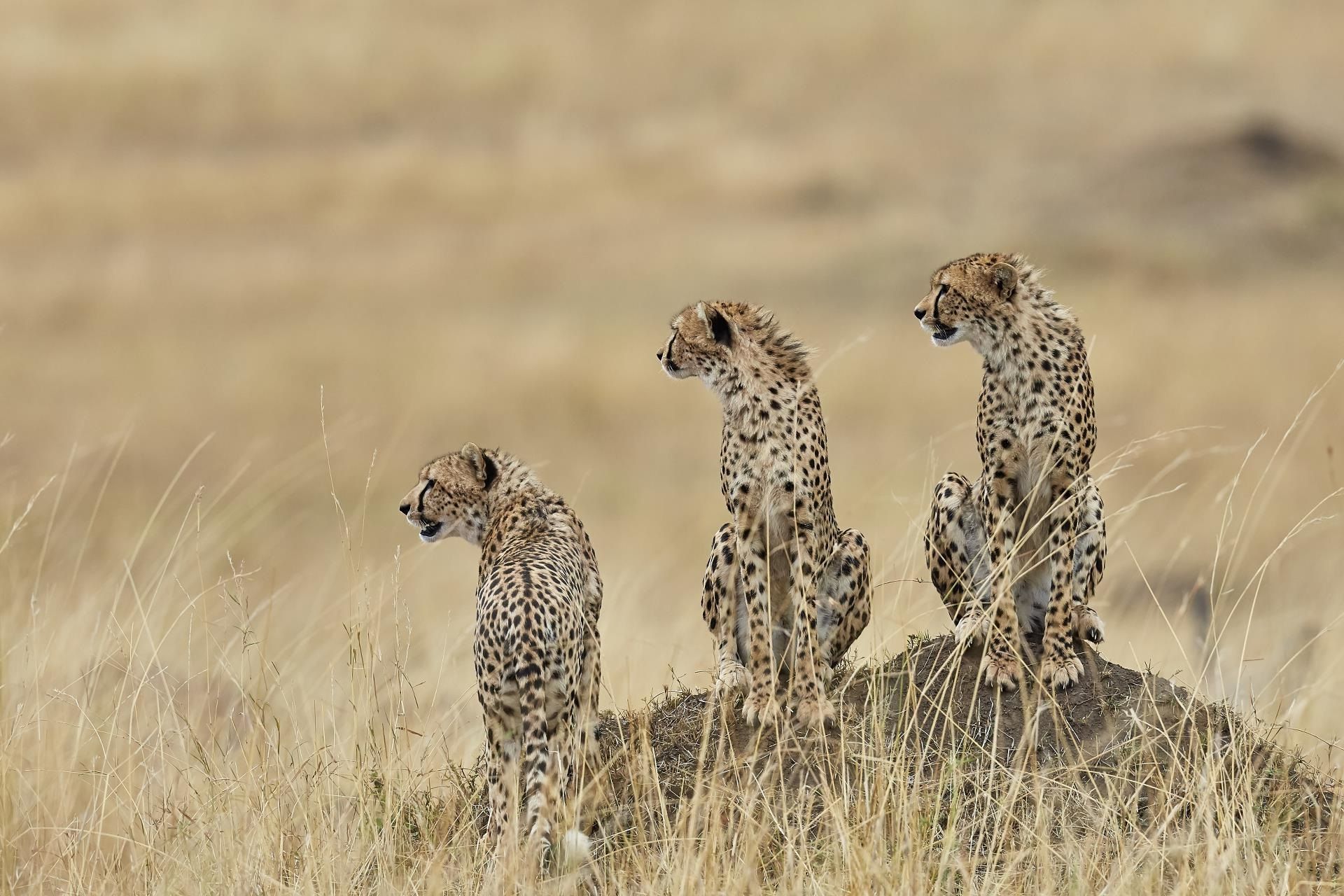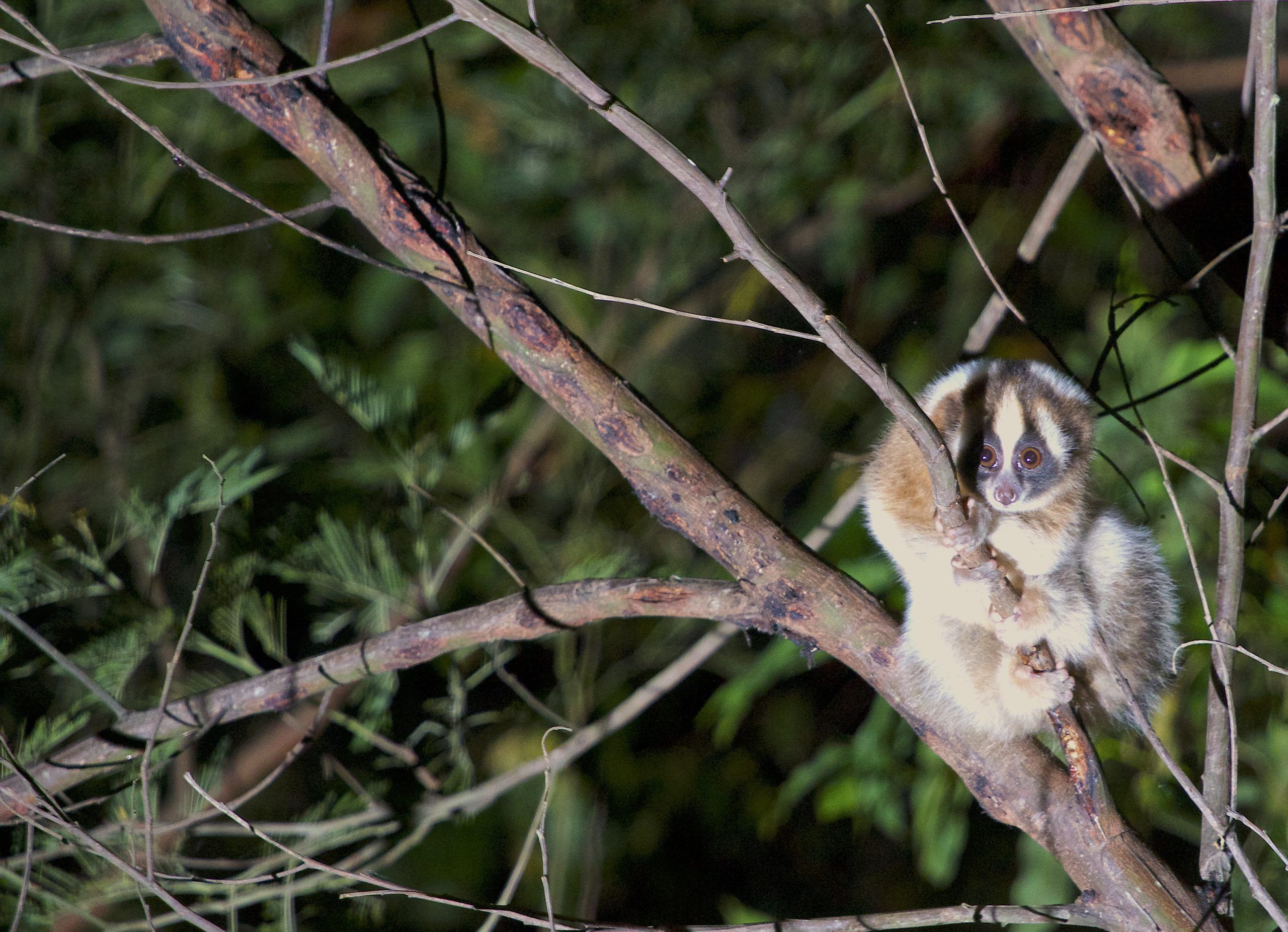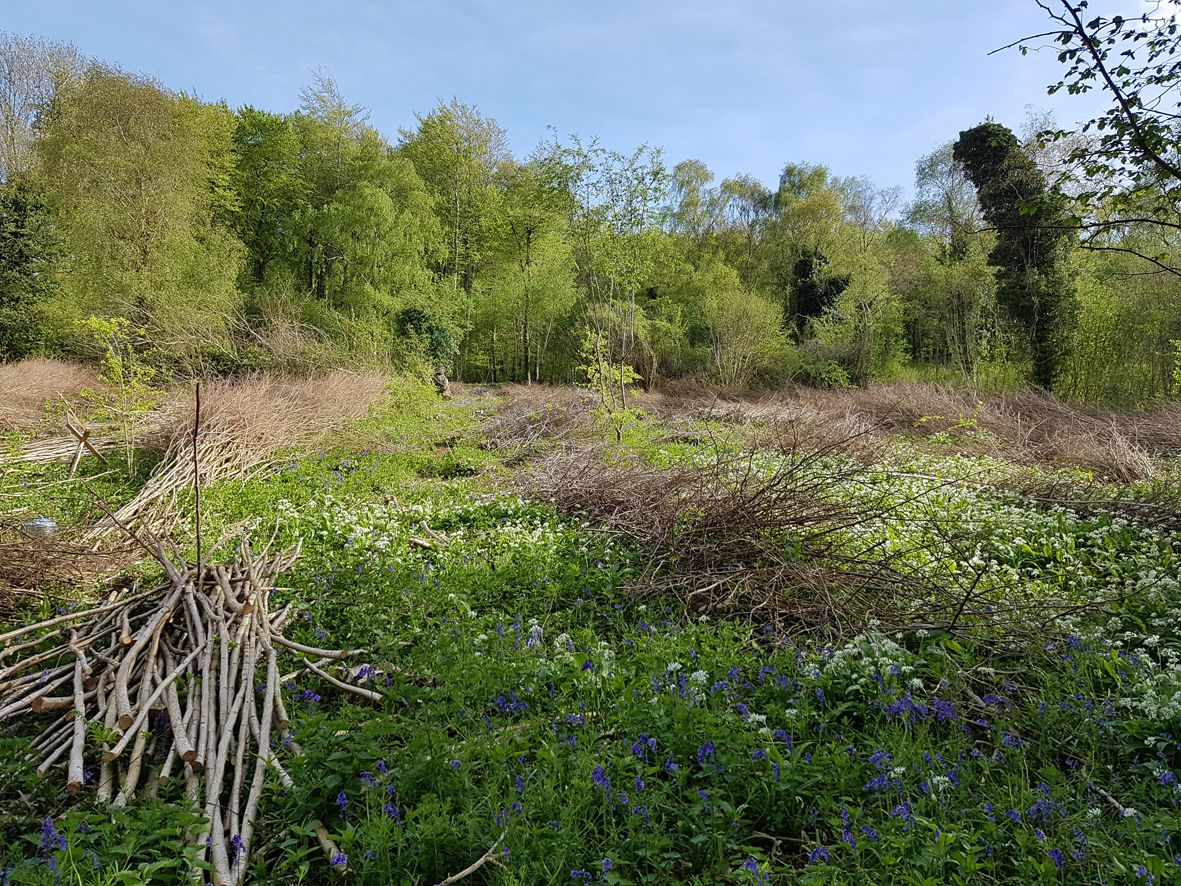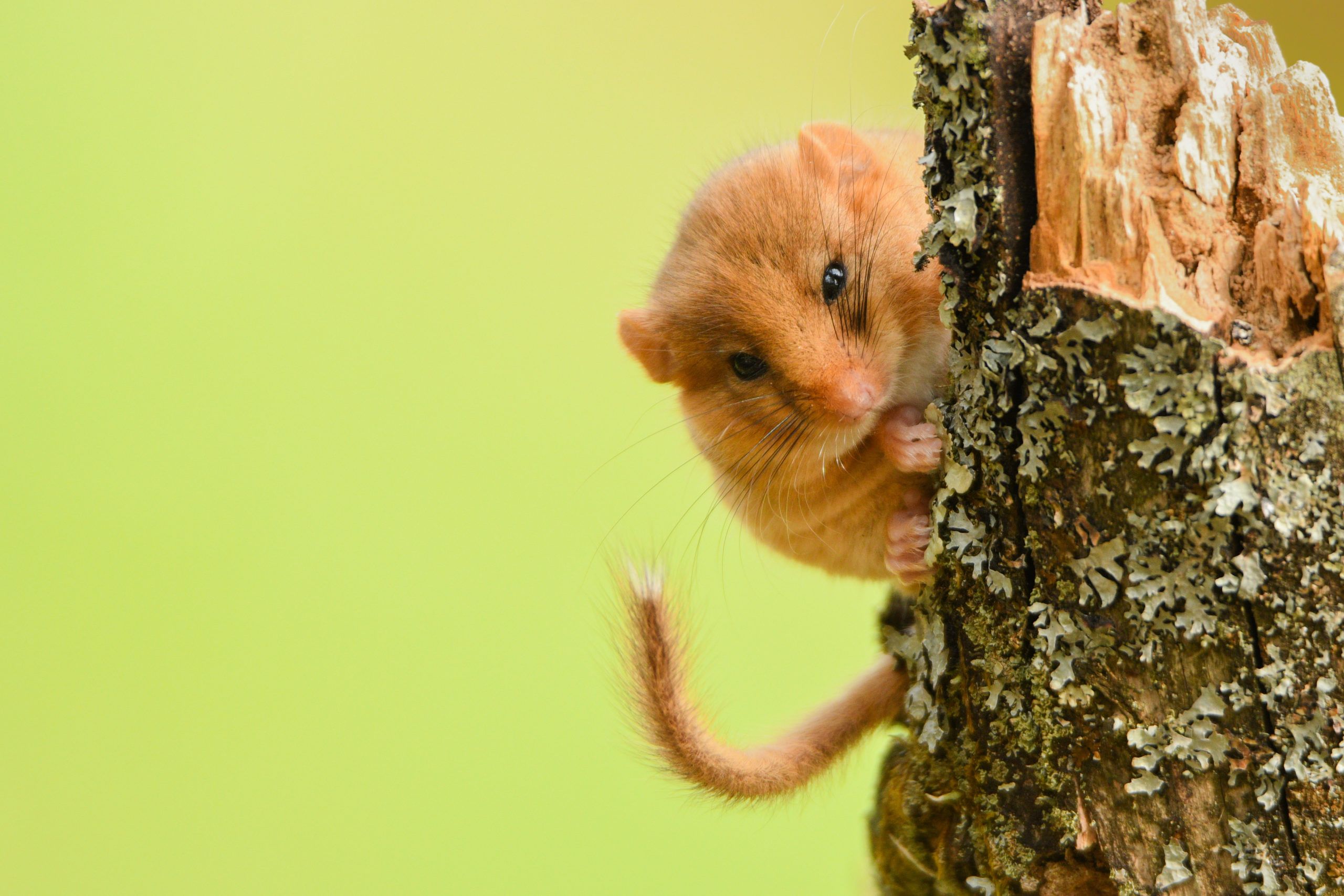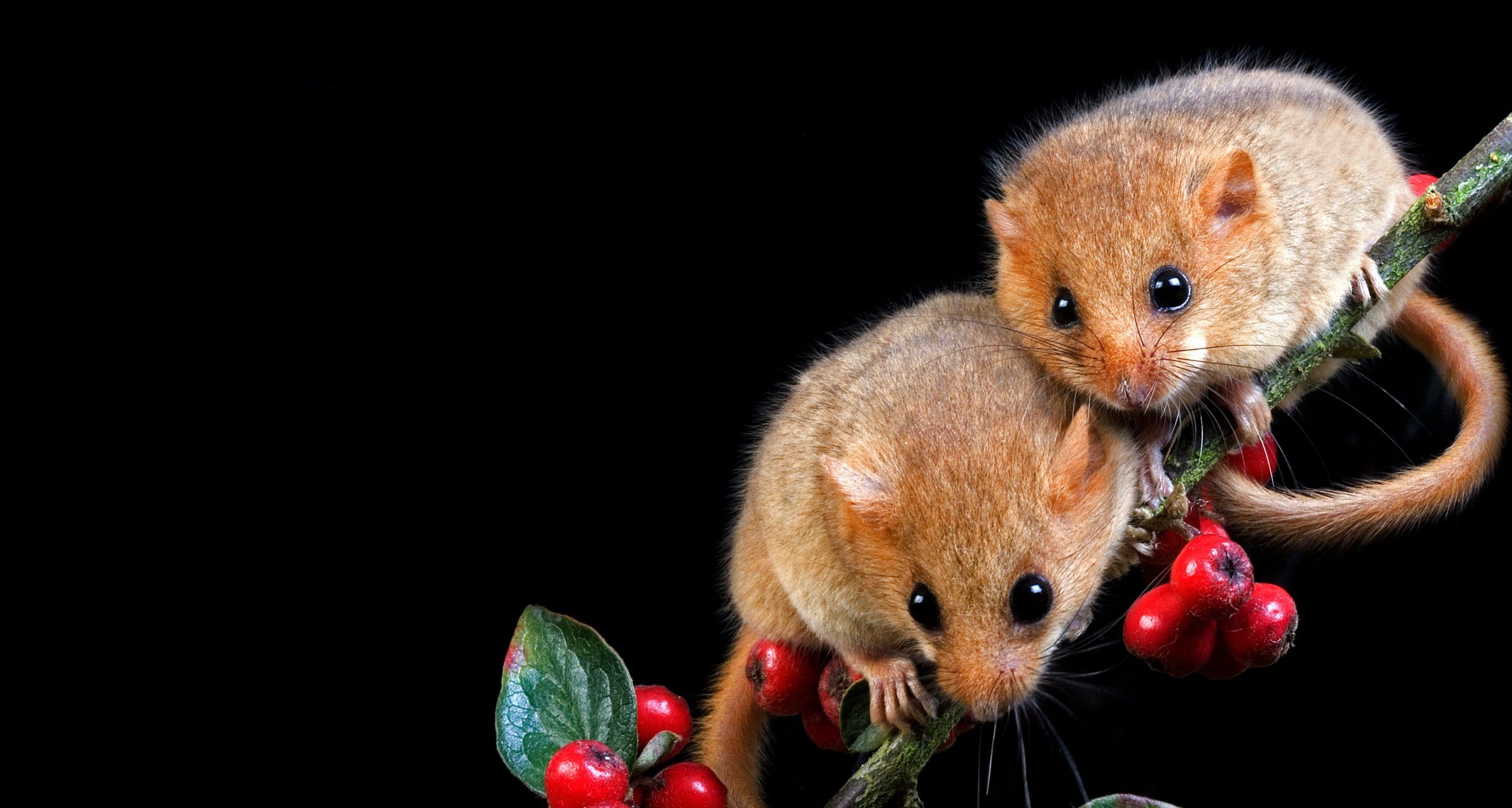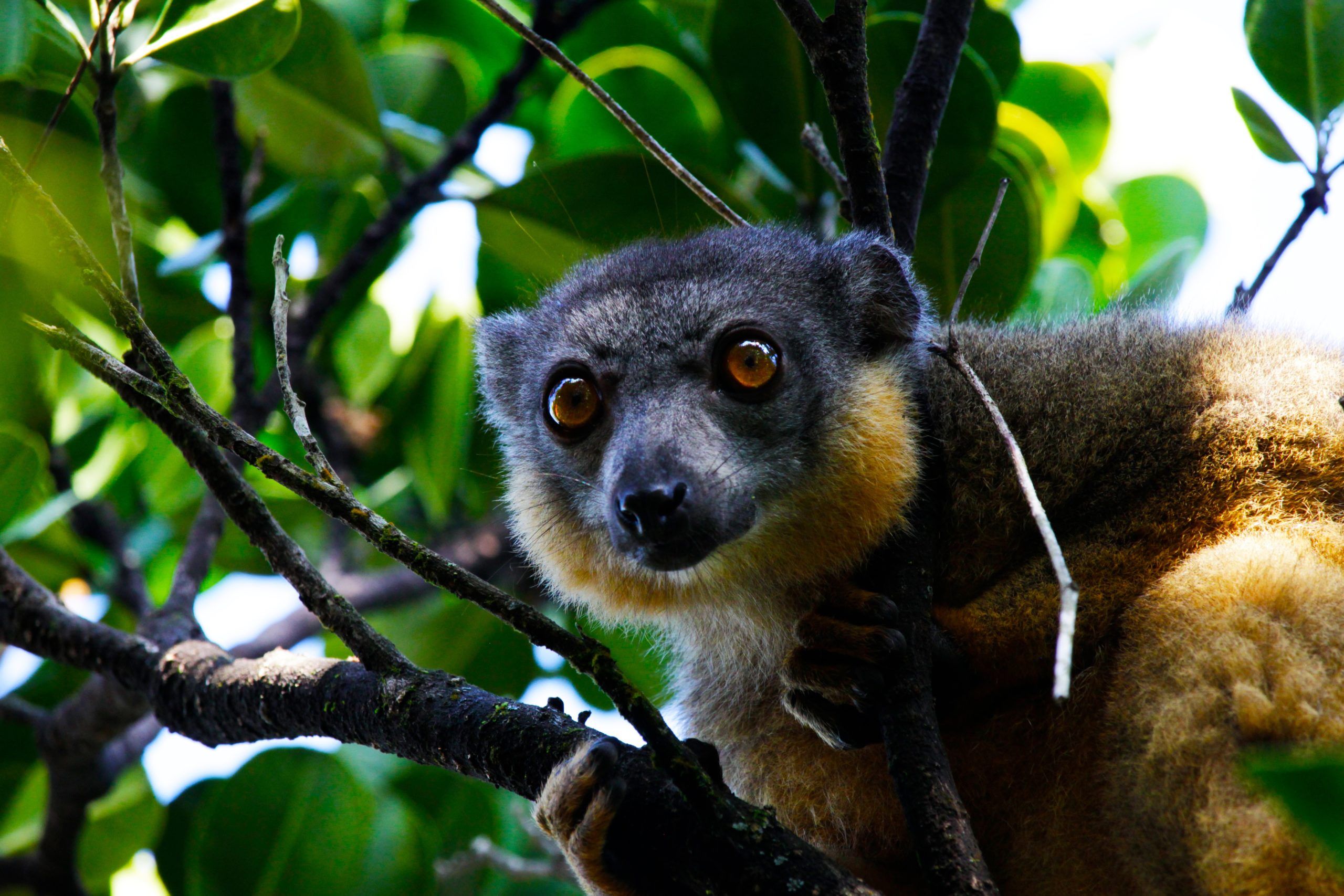Hazel dormice build different nests for different purposes: hibernating, breeding or just resting. Sometimes they don’t build a nest at all. But the different types of nests they do build might help us work out how much time dormice spend in different habitats. As part of my work at Fingle Woods, owned by the Woodland …
Read article...Voles, rats, shrews, mice, and hazel dormice can be difficult to study. Their size and behaviour make them hard to find and, living predominantly in the shrub layer and being nocturnal, makes hazel dormice even more tricky. Occasionally though, these small creatures give themselves away by their vocalisations. Whilst we may hear an indistinguishable high-pitched …
Read article...You might stumble upon a slightly frazzled looking person in a tatty woolly hat and a big purple jacket held together in places by duct tape. She may well be muttering to herself as she walks, very slowly, up and down between two lines of tape. At first glance, she appears to be metal-detecting – …
Read article...Ian Powell and the Arun Countryside Trust Few people know the woods on Tortington Common in West Sussex as well as Ian Powell. A local man, interested in natural history, he has lived his life with a passion for conserving the ancient woodlands of the Arun Valley. For two decades Ian, the principal dormouse monitor …
Read article...After a difficult start to last year, compounded by vast flooding, Amy Dickman and Ruaha Carnivore Project’s team in Tanzania retuned to work with a vengeance. Giving direct benefits to communities for the presence of wildlife is at the core of their work. They believe if people see wildlife as a resource, they’ll tolerate the …
Read article...As last year drew to a close we received a lovely message from Rebecca Klein of Cheetah Conservation Botswana (CCB). With your kind support, we’ve been helping Rebecca build a brighter future for cheetahs. Thankfully there have been relatively low COVID-19 infection rates in Botswana. Despite the government restricting movement, Rebecca and her team were …
Read article...Slow lorises may look cute and cuddly but these large-eyed primates are deadly and use venom to injure and even kill other slow lorises. Recent research has shown that slow lorises use venom as a defense mechanism against others of its kind, something that has previously only been seen in four other species worldwide. Only …
Read article...Pete Etheridge writes about the importance of coppicing for woodland conservation and biodiversity. A decline in coppicing Coppicing has been practised in the UK for hundreds (if not thousands) of years. In 1905 (decades after the peak in coppicing activity), it was estimated that there was somewhere in the region of 230,000 ha of actively …
Read article...Lorna Griffiths, from the Nottinghamshire Dormice Group (NDG), describes how the dormice in her county are delighting the group members. In 2016 I wrote an article for The Dormouse Monitor about the hazel dormouse releases in Nottinghamshire. Since then, the Nottinghamshire Dormouse Project, which focuses on the three reintroductions, Treswell Wood (2013), Eaton Wood (2014) …
Read article...Neil Bemment, Chair of the Common Dormouse Captive Breeders’ Group (CDCBG), explains what a dormouse ‘studbook’ is, and why we need it. The Common Dormouse Captive Breeders Group (CDCBG) was established in the early 1990s and brought together several like-minded private individuals and zoological collections interested in conserving hazel dormice. As the CDCBG population slowly …
Read article...This year has been an extremely difficult one for all of us. However, as an unprecedented global catastrophe unfolded, we’ve been heartened at PTES to hear how our teams on the ground and around the globe have been adapting and overcoming challenges. Zac Hill, from SEED Madagascar, recently got in touch, proud to tell us …
Read article...Although specific species like Persian leopards, Asiatic cheetahs, and Persian onagers whose last haven has been the expanses of Iran are endangered, we can hopefully strive for a better future for these wonderful creatures. Mitra Gholami is an environmentalist and colleague of PTES’s Conservation Partner, Dr. Mohammad Farhadinia. She recently wrote to us about her …
Read article...Press and media
For all media enquiries please contact Jane Bevan or Adela Cragg at Firebird Public Relations on 01235 835297 or email ac@firebirdpr.co.uk.


